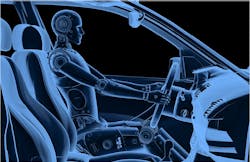May 6, 2021—Since the Biden administration's landmark announcement for its massive $2.3 trillion infrastructure plan back in late March, headlines have been filled with topics like electric vehicle incentives, charging infrastructure investments, and semiconductor production.
But far less attention’s been paid to H.R. 2 (also known as the Moving Forward Act)—a piece of legislation that’s currently in the works and could also have a critical impact on consumers and aftermarket professionals alike.
To learn more about the bill and its potential future impact Ratchet+Wrench checked in with Ann Wilson, the Motor and Equipment Manufacturers Association’s (MEMA) senior vice-president of government affairs.
What will H.R. 2 include?
H.R. 2, which is part of the transportation reauthorization bill that will be reintroduced this year in the House of Representatives, is still under development but we know it will most likely be passed and signed into law by October 1.
Transportation bills are supposed to address things like filling potholes and building bridges, but safety issues are also included, and that's a piece MEMA’s been working with the House and Senate on. We’re working on updates to the Monroney, or the five star label that tells consumers about a vehicle’s crashworthiness and measures the effectiveness of safety features like seatbelt protection, air bags, and the stability and rigidity of a vehicle's overall structure (features that protect you when you crash).
But that label doesn’t grade what we call pre-crash technology—which includes ADAS features like AEB (automatic emergency braking), lane keeping technology, blind spot detection, and back-up technology (or the technology that can actually stop you prior to hitting something). We want to update that car assessment program to give consumers information about that pre-crash technology so they can make informed decisions on that front.
What could that change mean for consumers?
Back in 2015, MEMA worked with Boston Consulting Group to fund a study that found we could save 10,000 lives a year if we had a full fleet of vehicles that had this wide range of pre-crash technologies. When you think about all of the accidents we see on highways and roads, and the ability to stop a vehicle before it crashes would be life-changing and it would save lives and reduce accidents.
But when you go to buy a car, those pre-crash safety features are all called different things and named differently by each vehicle manufacturer, which makes it difficult to compare and understand what you’re buying as a consumer. So MEMA’s work on focusing in on those definitions and setting more clear standards on those technologies will help consumers through that process.
How will those changes impact the aftermarket?
More and more vehicle manufacturers are rolling out these features like AEB and not all are mandated, but as mandates take shape those standards are going to impact the aftermarket. If one vehicle manufacturer calls AEB one thing and another calls and approaches AEB in a different way, that’s something the aftermarket is going to have to work with and around when those cars end up in the shop. And as those technologies are better defined and a roadmap is built and mandated around them, the aftermarket is going to need to know what those requirements are in order to work on those vehicles.
So the real aftermarket concern is going to be how do you get the expertise to be able to service these vehicles when they come into the shop? And that’s where data access comes in because you’re going to need to be able to understand what the vehicle is telling you with a lot of these technologies, and you’re going to need that data access to be able to service and maintain those vehicles. Shops are going to have to start asking what parts are we going to need to maintain or repair those vehicles? What skills and training are our technicians going to need to be able to do that?
That’s one reason we think it will be so important to include data access legislation within the transportation reauthorization bill, because the two are very much connected. If for nothing else, that data access will help ensure that drivers who can’t afford a new vehicle have greater access to shops where they can get their vehicles repaired and ensure that that pre-crash technology is able to be maintained.
The bottom line is there's going to be massive legislation passed this year that’s going to impact almost every aspect of transportation, and we know for sure it will impact new requirements for safety devices and vehicles. There will undoubtedly be new rules and the aftermarket has to be ready to adapt.
About the Author

Megan Gosch
Megan Gosch is the associate editor of Ratchet+Wrench, where she produces content and oversees production of the publication.
